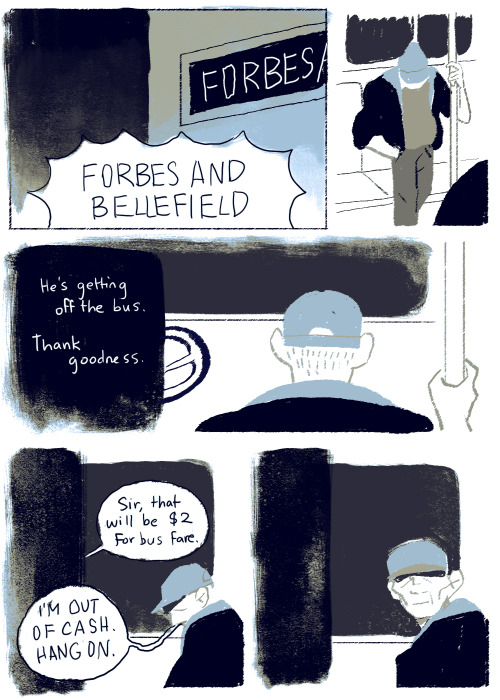A Rare Screentest Of Vivien Leigh And Clark Gable, Just After Vivien Had Been Announced As The Official






A rare screentest of Vivien Leigh and Clark Gable, just after Vivien had been announced as the official actress portraying Scarlett O’hara. A Selznick employee remembers, “Gable knew this was a woman’s picture and treated her with the utmost respect.”
More Posts from Smparticle2 and Others



If you’ve ever watched a rocket launch, you’ve probably noticed the billowing clouds around the launch pad during lift-off. What you’re seeing is not actually the rocket’s exhaust but the result of a launch pad and vehicle protection system known in NASA parlance as the Sound Suppression Water System. Exhaust gases from a rocket typically exit at a pressure higher than the ambient atmosphere, which generates shock waves and lots of turbulent mixing between the exhaust and the air. Put differently, launch ignition is incredibly loud, loud enough to cause structural damage to the launchpad and, via reflection, the vehicle and its contents.
To mitigate this problem, launch operators use a massive water injection system that pours about 3.5 times as much water as rocket propellant per second. This significantly reduces the noise levels on the launchpad and vehicle and also helps protect the infrastructure from heat damage. The exact physical processes involved – details of the interaction of acoustic noise and turbulence with water droplets – are still murky because this problem is incredibly difficult to study experimentally or in simulation. But, at these high water flow rates, there’s enough water to significantly affect the temperature and size of the rocket’s jet exhaust. Effectively, energy that would have gone into gas motion and acoustic vibration is instead expended on moving and heating water droplets. In the case of the Space Shuttle, this reduced noise levels in the payload bay to 142 dB – about as loud as standing on the deck of an aircraft carrier. (Image credits: NASA, 1, 2; research credit: M. Kandula; original question from Megan H.)










Whisper Of The Heart Vertical Pan Shots - Dir Yoshifumi Kondo (1995)

Faster, smaller, more powerful computer chips: Hafnia dons a new face
Materials research creates potential for improved computer chips and transistors
It’s a material world, and an extremely versatile one at that, considering its most basic building blocks – atoms – can be connected together to form different structures that retain the same composition.
Diamond and graphite, for example, are but two of the many polymorphs of carbon, meaning that both have the same chemical composition and differ only in the manner in which their atoms are connected. But what a world of difference that connectivity makes: The former goes into a ring and costs thousands of dollars, while the latter has to sit content within a humble pencil.
The inorganic compound hafnium dioxide commonly used in optical coatings likewise has several polymorphs, including a tetragonal form with highly attractive properties for computer chips and other optical elements. However, because this form is stable only at temperatures above 3100 degrees Fahrenheit – think blazing inferno – scientists have had to make do with its more limited monoclinic polymorph. Until now.
Read more.

In slow motion, vortex rings can be truly stunning. This video shows two bubble rings underwater as they interact with one another. Upon approach, the two low-pressure vortex cores link up in what’s known as vortex reconnection. Note how the vortex rings split and reconnect in two places – not one. According to Helmholtz’s second theorem a vortex cannot end in a fluid–it must form a closed path (or end at a boundary); that’s why both sides come apart and together this way. After reconnection, waves ripple back and forth along the distorted vortex ring; these are known as Kelvin waves. Some of those perturbations bring two sides of the enlarged vortex ring too close to one another, causing a second vortex reconnection, which pinches off a smaller vortex ring. (Image source: A. Lawrence; submitted by Kam-Yung Soh)
Note: As with many viral images, locating a true source for this video is difficult. So far the closest to an original source I’ve found is the Instagram post linked above. If you know the original source, please let me know so that I can update the credit accordingly. Thanks!






It’s been an emotional week. I wanted to share this encounter I had with a very hateful man on the Pittsburgh bus because it reminds me that there are brave people in this world. Let’s all do everything we can to stand up for each other.

Being the only audience member at a panel, the grad student pities everyone in the room.

Self-assembling nanoparticle arrays can switch between a mirror and a window
By finely tuning the distance between nanoparticles in a single layer, researchers have made a filter that can change between a mirror and a window.
The development could help scientists create special materials whose optical properties can be changed in real time. These materials could then be used for applications from tuneable optical filters to miniature chemical sensors.
Creating a ‘tuneable’ material - one which can be accurately controlled - has been a challenge because of the tiny scales involved. In order to tune the optical properties of a single layer of nanoparticles - which are only tens of nanometres in size each - the space between them needs to be set precisely and uniformly.
To form the layer, the team of researchers from Imperial College London created conditions for gold nanoparticles to localise at the interface between two liquids that do not mix. By applying a small voltage across the interface, the team have been able to demonstrate a tuneable nanoparticle layer that can be dense or sparse, allowing for switching between a reflective mirror and a transparent surface. The research is published today in Nature Materials.
Read more.


Why can we find geometric shapes in the night sky? How can we know that at least two people in London have exactly the same number of hairs on their head? And why can patterns be found in just about any text — even Vanilla Ice lyrics? Is there a deeper meaning?
The answer is no, and we know that thanks to a mathematical principle called Ramsey theory. So what is Ramsey theory? Simply put, it states that given enough elements in a set or structure, some particular interesting pattern among them is guaranteed to emerge.
The mathematician T.S. Motzkin once remarked that, “while disorder is more probable in general, complete disorder is impossible.” The sheer size of the Universe guarantees that some of its random elements will fall into specific arrangements, and because we evolved to notice patterns and pick out signals among the noise, we are often tempted to find intentional meaning where there may not be any. So while we may be awed by hidden messages in everything from books, to pieces of toast, to the night sky, their real origin is usually our own minds.
From the TED-Ed Lesson The origin of countless conspiracy theories - PatrickJMT
Animation by Aaron, Sean & Mathias Studios

-
 fantasticbeautydara liked this · 3 months ago
fantasticbeautydara liked this · 3 months ago -
 polinka22malinka liked this · 5 months ago
polinka22malinka liked this · 5 months ago -
 mary-maud reblogged this · 7 months ago
mary-maud reblogged this · 7 months ago -
 oxfordsonnets liked this · 1 year ago
oxfordsonnets liked this · 1 year ago -
 daddylorianz reblogged this · 2 years ago
daddylorianz reblogged this · 2 years ago -
 none-seriously liked this · 2 years ago
none-seriously liked this · 2 years ago -
 gimmiethatfanfiction liked this · 2 years ago
gimmiethatfanfiction liked this · 2 years ago -
 horror4themasses liked this · 2 years ago
horror4themasses liked this · 2 years ago -
 horror4themasses reblogged this · 2 years ago
horror4themasses reblogged this · 2 years ago -
 mrscoolsatchel71 liked this · 3 years ago
mrscoolsatchel71 liked this · 3 years ago -
 natashawood liked this · 3 years ago
natashawood liked this · 3 years ago -
 only-one-of-each-of-us liked this · 3 years ago
only-one-of-each-of-us liked this · 3 years ago -
 traumatizedbyeggsandwich reblogged this · 3 years ago
traumatizedbyeggsandwich reblogged this · 3 years ago -
 awayyoflife liked this · 3 years ago
awayyoflife liked this · 3 years ago -
 joanleslies reblogged this · 3 years ago
joanleslies reblogged this · 3 years ago -
 swimmingclamroadkid liked this · 3 years ago
swimmingclamroadkid liked this · 3 years ago -
 daddylorianz reblogged this · 4 years ago
daddylorianz reblogged this · 4 years ago -
 daddylorianz liked this · 4 years ago
daddylorianz liked this · 4 years ago -
 classicholly-wood reblogged this · 4 years ago
classicholly-wood reblogged this · 4 years ago -
 londonexile liked this · 4 years ago
londonexile liked this · 4 years ago -
 vanwssa liked this · 4 years ago
vanwssa liked this · 4 years ago -
 asnowballschance liked this · 4 years ago
asnowballschance liked this · 4 years ago -
 lavenderloisblue reblogged this · 4 years ago
lavenderloisblue reblogged this · 4 years ago -
 lavenderloisblue liked this · 4 years ago
lavenderloisblue liked this · 4 years ago -
 vivianholman-blog liked this · 4 years ago
vivianholman-blog liked this · 4 years ago -
 everlastingstarlight liked this · 4 years ago
everlastingstarlight liked this · 4 years ago -
 everlastingstarlight reblogged this · 4 years ago
everlastingstarlight reblogged this · 4 years ago -
 tresfoufou liked this · 4 years ago
tresfoufou liked this · 4 years ago -
 risetothesun liked this · 4 years ago
risetothesun liked this · 4 years ago -
 boulevard-of-fame liked this · 5 years ago
boulevard-of-fame liked this · 5 years ago -
 a-republican-mind reblogged this · 5 years ago
a-republican-mind reblogged this · 5 years ago -
 n4634 liked this · 5 years ago
n4634 liked this · 5 years ago -
 anonymouslyannoyeddolphin liked this · 5 years ago
anonymouslyannoyeddolphin liked this · 5 years ago -
 lunadreamsz reblogged this · 5 years ago
lunadreamsz reblogged this · 5 years ago -
 studycoffeeandcomfort reblogged this · 5 years ago
studycoffeeandcomfort reblogged this · 5 years ago -
 dpframeblog liked this · 5 years ago
dpframeblog liked this · 5 years ago -
 hrhduchessofclarence liked this · 5 years ago
hrhduchessofclarence liked this · 5 years ago -
 y-yinn liked this · 5 years ago
y-yinn liked this · 5 years ago -
 johnwyck liked this · 6 years ago
johnwyck liked this · 6 years ago -
 perfectmarveloustune liked this · 6 years ago
perfectmarveloustune liked this · 6 years ago